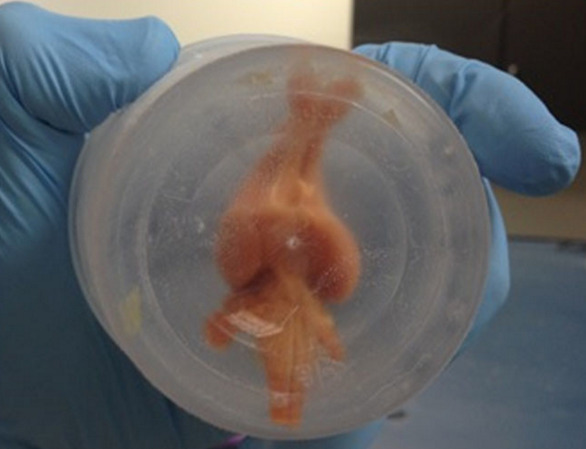Researchers 'Beautifully Preserve' Rabbit Brain Using Cryonics
Researchers have successfully preserved a rabbit's brain using cryopreservation technology, the Brain Preservation Foundation has announced. The work was done by 21st Century Medicine's researchers, and used an Aldehyde-stabilized procedure to preserve and store the brain without damaging the neural circuits, opening the door for very long term storage and preservation efforts. The study has been published in Cryobiology.
The Brain Preservation Foundation has awarded the 21st Century Medicine team with their Small Mammal Prize for the rabbit brain work. Now that a recipient has been selected, the foundation will focus on a new Large Mammal project seeking similar preservation success with a larger brain. Speaking about the project, the foundation's President Dr. Kenneth Hayworth said:
Every neuron and synapse looks beautifully preserved across the entire brain. Simply amazing given that I held in my hand this very same brain when it was vitrified glassy solid... This is not your father's cryonics.
Cryonics, of course, is the technology largely relegated to the realm of science fiction, being the premise for deep-space adventures and plot tools by which characters can be preserved for long periods of time. In the real world, freezing someone and keeping them in that state, only to revive them far into the future, is not possible.

Image above: frozen rabbit brain
For such preservation to be possible, researchers will need to (among other things) develop a solution for preserving the tissue destined for the freezer — if you were to simply freeze the tissue in its regular state, the ice crystals that form would cause damage and revival would not be possible. This preservation process involves a technology known as vitrification that uses substances (like the one used with the rabbit brain) called cryoprotectants.
Said the BPF:
When optimally applied, vitrification eliminates damage to cell structures caused by ice formation and has been shown compatible with recovery of biological functioning in small slices of isolated brain tissue. But when applied to whole brains, limitations in diffusibility lead to dramatic shrinkage of the brain's tissue. Electron microscope images of such brains show dramatic distortions to the delicate neural circuits, and recovery of biological function in whole brains or animals remains far out of reach.
This makes the Aldehyde-stabilized cryopreservation technique a breakthrough; it resulted in a (dead) rabbit brain that had "beautifully preserved neural circuits," opening the door for future cryonics work and possibly helping to spur increased interest in the science.
